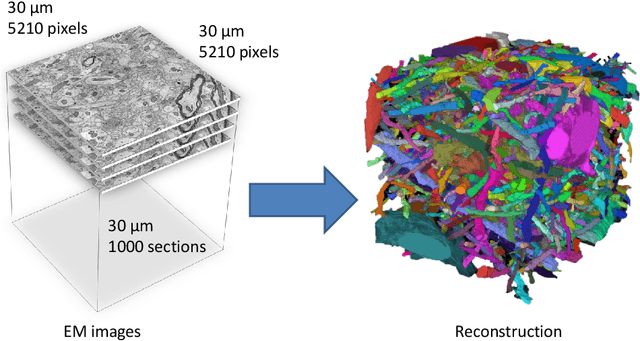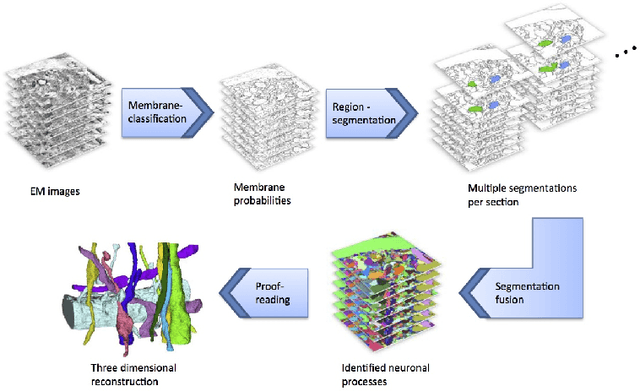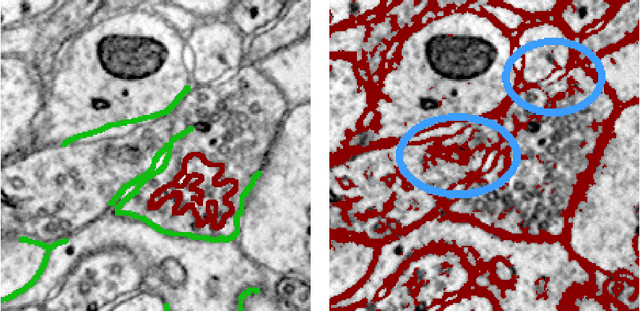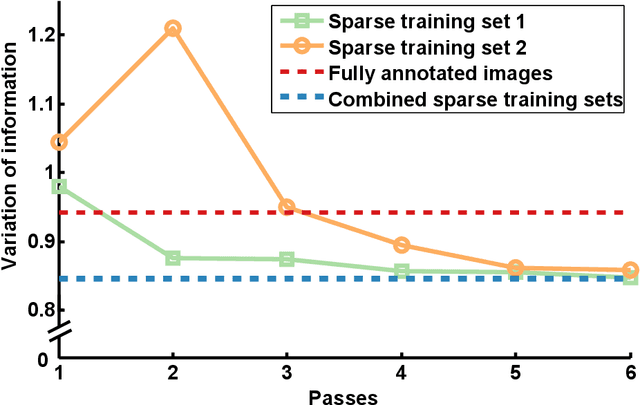Thouis R. Jones
Large-Scale Automatic Reconstruction of Neuronal Processes from Electron Microscopy Images
Mar 28, 2013



Abstract:Automated sample preparation and electron microscopy enables acquisition of very large image data sets. These technical advances are of special importance to the field of neuroanatomy, as 3D reconstructions of neuronal processes at the nm scale can provide new insight into the fine grained structure of the brain. Segmentation of large-scale electron microscopy data is the main bottleneck in the analysis of these data sets. In this paper we present a pipeline that provides state-of-the art reconstruction performance while scaling to data sets in the GB-TB range. First, we train a random forest classifier on interactive sparse user annotations. The classifier output is combined with an anisotropic smoothing prior in a Conditional Random Field framework to generate multiple segmentation hypotheses per image. These segmentations are then combined into geometrically consistent 3D objects by segmentation fusion. We provide qualitative and quantitative evaluation of the automatic segmentation and demonstrate large-scale 3D reconstructions of neuronal processes from a $\mathbf{27,000}$ $\mathbf{\mu m^3}$ volume of brain tissue over a cube of $\mathbf{30 \; \mu m}$ in each dimension corresponding to 1000 consecutive image sections. We also introduce Mojo, a proofreading tool including semi-automated correction of merge errors based on sparse user scribbles.
Towards automated high-throughput screening of C. elegans on agar
Mar 22, 2010



Abstract:High-throughput screening (HTS) using model organisms is a promising method to identify a small number of genes or drugs potentially relevant to human biology or disease. In HTS experiments, robots and computers do a significant portion of the experimental work. However, one remaining major bottleneck is the manual analysis of experimental results, which is commonly in the form of microscopy images. This manual inspection is labor intensive, slow and subjective. Here we report our progress towards applying computer vision and machine learning methods to analyze HTS experiments that use Caenorhabditis elegans (C. elegans) worms grown on agar. Our main contribution is a robust segmentation algorithm for separating the worms from the background using brightfield images. We also show that by combining the output of this segmentation algorithm with an algorithm to detect the fluorescent dye, Nile Red, we can reliably distinguish different fluorescence-based phenotypes even though the visual differences are subtle. The accuracy of our method is similar to that of expert human analysts. This new capability is a significant step towards fully automated HTS experiments using C. elegans.
 Add to Chrome
Add to Chrome Add to Firefox
Add to Firefox Add to Edge
Add to Edge